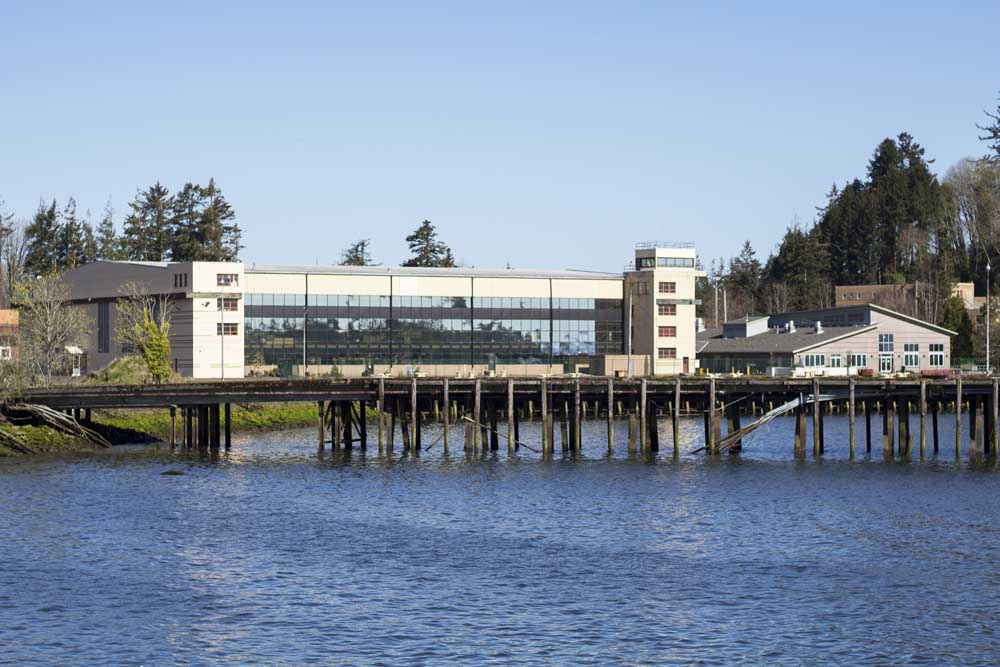Standards too late for Walmart
Published 5:00 pm Wednesday, April 10, 2013
WARRENTON Remember when the city of Warrenton proposed adopting a western theme back in 2010?
Although that design plan never quite caught on, commercial architectural and site design standards are being considered again at the city this time without a theme and with codes that would prevent a business from building with its back against U.S. Highway 101.
Its too late for these standards to be applied to a new Walmart store proposed late last year near Costco. They also wont do much to correct the design of Home Depot, which seemed to be sore spot for many on the commission.
But with several developers and landowners, including Wes Giesbrecht of the North Coast Retail Center, in attendance Tuesday and opposed to the proposed standards in their current form, the commission decided to hold off on any decision-making and asked city staff to send the proposal back to the planning commission for a full review.
I think this is a no-brainer. It needs to be remanded, City Commissioner Tom Dyer said. And I think we need to include the people who spoke here tonight at the planning commission because I was convinced. But once they talked, it made sense. No one was mad, no one was angry, but well yeah, we didnt think about it. And it doesnt hurt to take a little bit of time to do it right.
Id rather do it right one time than do it wrong two or three times.
Developers in the audience took issue primarily with the design standards that seemed to appeal to pedestrians. The code was taken from the city of Woodland, Wash., and then whittled down, as Commissioner Dick Hellberg put it, to make it fit Warrenton.
City Planner Skip Urling said Woodland was used as a starting point, given its similar size and population. But Giesbrecht was quick to point out Warrenton is trying to encourage pedestrians in a highway-commercial area. The newest development near the highway, he added, does not follow the design standard at all.
My original understanding was that the primary concern was a lot of the deficiencies related to the Home Depot project, Giesbrecht said, of the building which is butted up against the highway. I may be incorrect in saying that, but that was kind of my initial impression. When I look at these revised design standards and I look at what weve already built in the North Coast (Retail Center), I dont think there is a building there that follows these design standards.
The building that does follow the design standards the closest, he added, would be AutoZone, which he called the most boring bland-looking building ever.
The standards would require drive-thrus to be not visible from the street, either on the backside of the building or surrounded by screens. Taco Bell, as an example, would not be visible from the street if a screen was to be put in place to cover the drive-thru. The same with Wauna Federal Credit Union.
The standards would also repeal the 50-foot setback along Highway 101, calls for good housekeeping at commercial developments and establishes new site design standards for buildings including facades, entrances, blank wall treatments, roof lines and roof top equipment. Sidewalks and street trees are also required.
I dont know if adopting standards is necessarily going to get us to where we want to go. I think that it would result in the expense of unintended consequences and I think that it could be potentially problematic, Giesbrecht said. He also added that the standards would be better suited for downtown Portland, Seattle or other metropolitan areas.
This location is highway-commercial and is going to attract highway-commercial type users, he said. And trying to create a pedestrian environment in an automotive center environment, would not work in the community. He noted he never sees anyone walk on the sidewalk along Highway 101.
Urling asked the commission to look at the standards a little longer to see what its trying to accomplish and what it is trying to prevent.
There are lots of illustrations and photographs included as examples, he said. Look at those as you read the language and see if you think thats attractive or not.
City Commissioner Henry Balensifer said he agreed that the examples were attractive but when I try to envision in my head the current development that we have, and then whats going to go in there next …
But thats how cities evolve, Urling replied.
Balensifer said he was 100 percent behind commercial design standards because vision plans are weak, as was the case with the western theme vision discussed in November 2010.
Putting it into code is important, but Im just not sure with particularly the concerns Ive heard, Im not sure if it fits, so to speak, all the way, he said.
The western theme, said by then-Mayor Gil Gramson to help encompass Fort Clatsop with the citys current nautical theme, was a not well received, Mayor Mark Kujala said.
When we made the announcement, I remember hearing from a number of people at the post office how bad the idea was, Kujala said.
The theme was never applied to any developments.
Urling was directed by the city commission to send the new site design standards back to the planning commission for a full review. Urling said it was the planning commissions idea to change the design standards. But Balensifer, who previously served on the planning commission, said that was an attempt to rush the standards forward before the Walmart proposal came up. Having already presented to the planning commission and having received initial approval on applications from that commission, it is now too late for the standards, when adopted, to be applied to the Walmart store, whose case is currently before the Oregon Land Use Board of Appeals.
A date has not yet been set for oral arguments, according to the LUBA website.





